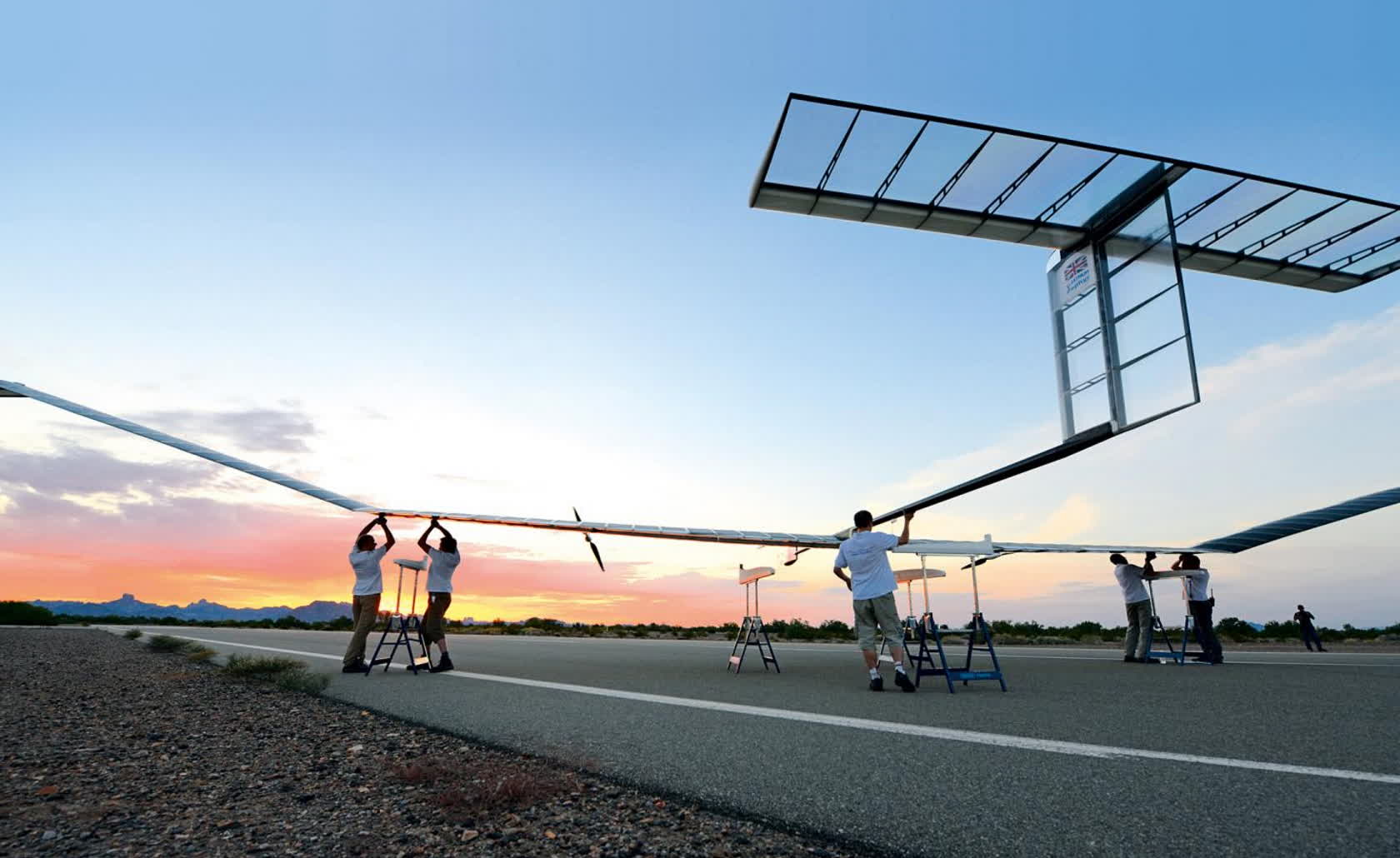In brief: Multinational aerospace company Airbus is always seeking to push the boundaries of what's possible in the aircraft industry for civilian and military purposes. And the company nearly achieved that feat recently with the "Zephyr," a high-altitude drone that almost broke the world-record for longest uninterrupted flight time for an aircraft. Unfortunately, 'almost' is the key word here.
After a whopping 64 days of flight without a single stop, Airbus' Zephyr suffered from an unfortunate (and unknown) failure that sent the drone into a steep dive over the Arizona Desert. According to Simply Flying, the craft reached speeds of over 4,500 feet per minute toward the end of its sudden descent.
Airbus offered the following comment to Simply Flying:
Following 64 days of stratospheric flight and the completion of numerous mission objectives, Zephyr experienced circumstances that ended its current flight. No personal injury occurred. Our teams are currently analyzing more than 1500 hours of stratospheric mission data. The valuable experience from this prototype's ultra-long endurance flight has proved to be a positive step toward the Army's high-altitude platform goals.
Airbus doesn't seem keen on revealing exactly what went wrong with the Zephyr, so unless the company changes its mind down the line, the 'circumstances' of the drone's failure will likely remain a mystery.
Though no lives were lost in this incident, the Zephyr's fate is still unfortunate. The flight endurance record we mentioned before has remained unbroken for over 63 years after being set by the 'Hacienda' in 1959. The Hacienda was a Cessna 172, a compact single-engine plane developed in the late 1940s and 1950s. The Cessna 172 is one of the most popular aircraft models in the world. More than 44,000 units have been built since its inception, and new 172s are still being produced to this day.
The Hacienda managed to stay in the air for 64 days, 22 hours, 19 minutes and five seconds, thanks to the assistance of a moving fuel truck which drove below the plane when it required a top-up. The Hacienda was already impressive for its time but it's even more impressive for maintaining its record despite all of the progress the aerospace industry has made over the past six decades.
Knowing that their own drone came within arm's length of toppling the Hacienda from its throne must be a bitter pill to swallow for Airbus. Still, 64 days of flight with no ground assistance is an incredible achievement for any aircraft. Furthermore, the Zephyr undoubtedly fed Airbus plenty of useful intel during its two-month tour of duty.
According to Airbus' official website, the Zephyr is the world's leading 'solar-electric stratospheric Unmanned Aerial System.' On the civilian side, one possible use case for the drone is beaming high-speed 4G and 5G connectivity to underserved regions that don't have consistent internet access.
